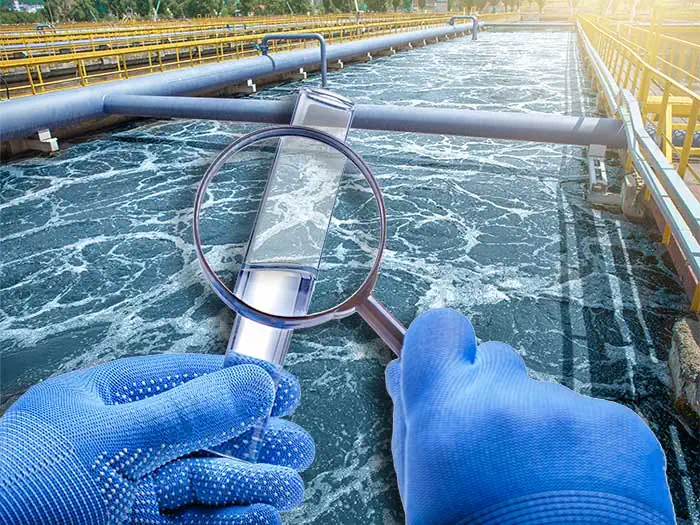PFAS Waste Management for Safer Disposal and Environmental Protection
Wiki Article
Advanced Approaches for Effective PFAS Contamination Removal
The relentless challenge of PFAS contamination requires the exploration of sophisticated removal methods that can efficiently deal with these hazardous compounds. Innovative technologies, such as advanced oxidation procedures and numerous adsorption methods, have emerged as promising solutions in mitigating PFAS from influenced settings.Recognizing PFAS Features
Although per- and polyfluoroalkyl materials (PFAS) have actually been extensively used in different commercial and consumer products due to their distinct properties, their persistence in the environment presents considerable difficulties to public health and wellness and safety and security. PFAS are a team of artificial chemicals defined by a carbon-fluorine bond, among the best chemical bonds understood, which adds to their phenomenal security and resistance to destruction. This security allows PFAS to build up in the environment and living organisms, resulting in potential damaging wellness results.These same residential properties contribute to their environmental persistence, as PFAS do not easily break down through natural processes. Comprehending the chemical properties of PFAS is crucial for establishing efficient methods to handle and alleviate their ecological effect.
Innovative Removal Technologies
The perseverance of PFAS in the setting has actually spurred the advancement of innovative remediation modern technologies targeted at properly removing these pollutants from impacted environments. Among the most encouraging techniques are sophisticated oxidation procedures (AOPs), which use powerful oxidants to damage down PFAS compounds right into much less dangerous compounds. AOPs can be tailored to target details PFAS frameworks, enhancing their efficacy.One more arising modern technology is using adsorption media, such as activated carbon and ion exchange materials, which can selectively capture PFAS from infected water. These materials have actually revealed significant elimination effectiveness, although regular replacement and regrowth are required to keep performance.
Membrane layer filtering techniques, consisting of reverse osmosis and nanofiltration, are also obtaining grip in PFAS remediation. These approaches can efficiently divide PFAS from water, offering a viable option for treating polluted resources. Furthermore, thermal therapy methods, such as incineration, can decay PFAS into safe results, though they need mindful management to manage emissions.
Collectively, these cutting-edge remediation innovations stand for significant advancements in the continuous fight against PFAS contamination, using various methods to recover affected atmospheres and protect public health and wellness.

Bioremediation Techniques
Bioremediation techniques offer a promising strategy to resolving PFAS contamination by taking advantage of the all-natural capacities of microbes to deteriorate these relentless substances (m270 waste management). This approach entails making use of germs, fungi, and various visit site other microorganisms that can metabolize or change PFAS compounds into less unsafe by-productsCurrent improvements in molecular biology and ecological microbiology have actually enhanced our understanding of microbial communities and their prospective roles in PFAS destruction. Scientists are actively discovering specific stress of microorganisms, such as Pseudomonas and Bacillus, which have shown the ability to break down specific PFAS substances.
In situ bioremediation methods, where microbes are stimulated directly in infected environments, can be especially efficient. This strategy typically entails the application of nutrients or electron donors to promote microbial growth and task. In addition, ex situ methods, such as bioreactors, enable for regulated problems that can optimize deterioration rates.
Regardless of the promise of bioremediation, difficulties stay, consisting of the intricate nature of PFAS compounds and the need for substantial area screening - m270 waste management. Continued r & d will be important to improve these techniques and evaluate their performance in varied environmental contexts
Adsorption and Filtering Techniques
Resolving PFAS contamination frequently includes using adsorption and purification approaches, which are developed to eliminate these consistent chemicals from water and dirt. Amongst the various methods, triggered carbon adsorption is commonly used as a result of its high surface and porosity, enabling reliable capturing of PFAS molecules. Granular turned on carbon (GAC) systems are specifically favored for treating large quantities of infected water, while powdered triggered carbon (POLITICAL ACTION COMMITTEE) can be utilized for smaller-scale applications.Ion exchange resins also reveal pledge in PFAS removal, functioning by trading PFAS ions with much less dangerous ions in the water. This technique has shown performance in concentrating PFAS compounds, promoting their subsequent removal. In addition, membrane filtration strategies, such More Info as reverse osmosis and nanofiltration, operate by utilizing semi-permeable membrane layers to different PFAS from water, efficiently reducing their focus.
While these techniques work, they have to be very carefully selected i thought about this based upon the particular PFAS compounds existing and the environmental context. Continual innovations in materials science and design are leading to the growth of novel adsorbents and purification systems that improve removal performances and minimize functional prices, thus boosting general removal efforts.
Regulatory and Policy Considerations
Just how can effective regulative structures boost the management of PFAS contamination? Extensive policies are important to make certain a collaborated and durable response to the difficulties postured by per- and polyfluoroalkyl substances (PFAS) Rules can establish clear guidelines for surveillance, reporting, and remediating PFAS-contaminated websites, fostering liability among sectors and public entities. (m270 waste management)
In enhancement, economic incentives and grants can be incorporated right into policies to motivate the fostering of sophisticated remediation modern technologies. Policymakers should likewise focus on r & d, making certain that arising methods for PFAS removal are verified and carried out efficiently.
Additionally, public awareness and interaction are crucial elements of any type of regulative approach, equipping neighborhoods to promote for their health and wellness. Inevitably, a well-structured regulative atmosphere will certainly not only improve the administration of PFAS contamination however likewise advertise sustainable methods that secure future generations.
Verdict
In recap, the complexity of PFAS contamination demands the fostering of innovative remediation approaches. Continued research and advancement in this area continue to be important to resolving the obstacles postured by PFAS contamination.Report this wiki page